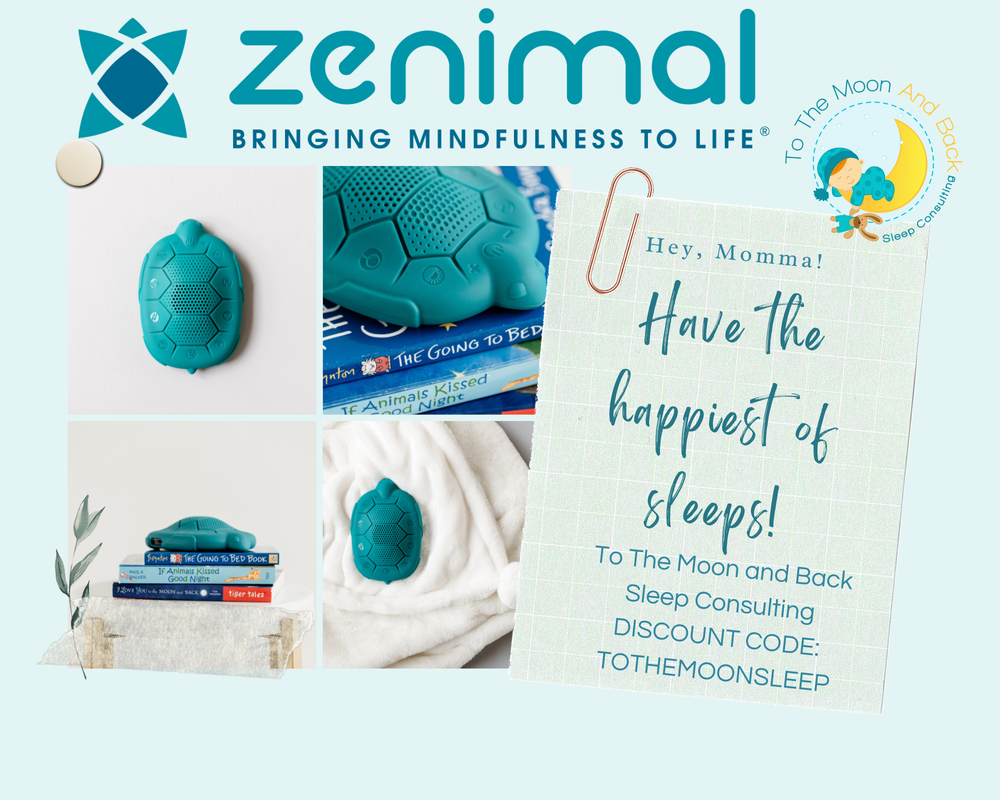|
Parenting a toddler can be a whirlwind of joy, laughter, and, sometimes, sleepless nights. If you’ve embarked on the journey of sleep training, you might be familiar with the term "extinction burst." It sounds daunting, but understanding and addressing it can be the key to a peaceful night’s sleep for both you and your little one. Let's dive into what an extinction burst is, why it happens, and how you can navigate through it successfully. What is an Extinction Burst? An extinction burst occurs when you first start to withdraw reinforcement from a behaviour—in this case, your toddler’s nighttime awakenings. Picture this: your toddler has gotten used to certain responses when they wake up at night, such as being picked up, rocked, or given a bottle. When you begin sleep training and stop these responses, your toddler might initially escalate their behaviour. This escalation is the extinction burst. Essentially, things get worse before they get better as your child tests the boundaries to see if their previous behaviour will eventually yield the desired response. Steps to Work Through the Extinction Burst
When to Seek Professional Help If you find that the extinction burst is lasting longer than expected, or if you're struggling to stay consistent and need additional support, don’t hesitate to seek help from a professional. A certified pediatric sleep consultant can offer personalized advice and strategies tailored to your child’s needs. They can also provide the emotional support you need during this challenging time. Final Thoughts Navigating through an extinction burst during sleep training can be exhausting, but it’s a vital step toward helping your toddler learn to self-soothe and sleep independently. By staying consistent, creating a comforting bedtime routine, and seeking help when necessary, you can guide your child through this phase and onto restful nights for the entire family. Remember, you’re not alone in this journey. Many parents have faced the same challenges and come out the other side with happier, well-rested children. Hold on to that thought, keep pushing through, and soon, peaceful nights will become the norm rather than the exception. If you need help through this stage of your sleep training journey I'd be more than happy to help. Book your Free 20-minute Sleep Evaluation Call today. I'll learn more about what's happening with your child's sleep, explain why and how I can help your family become a well rested one. AuthorErin Neri - Certified Pediatric Sleep Consultant and Owner of To The Moon and Back Sleep Consulting since 2016. Throughout the sleep training process, I'm often asked how to keep baby awake through their feeding during the bedtime routine. When you're working on sleep training, my number one rule is to keep your baby wide awake through any feeds. Nine times out of ten, the problem is that the bottle or breast has become a sleep prop. If you don't break the connection your baby has between the feed and sleep, the process will be so much more complicated. It can cause night wake-ups, and then when they wake up at night, they will still have the idea that they need a bottle or breast to get back to sleep at night. I suggest moving the feeding up in the bedtime routine. Most people have a feeding as the last step. That can be tricky, especially if they're not napping great yet. They could be tired by the time bedtime comes. By the time they've had a bath, and you've got jammies on, reading stories, and then you're going into a feed, they might be way too exhausted even to try to stay awake for the feed. Then you're fighting a battle of tickling and talking to them and trying to keep them awake, and they're so tired they really can't help you out. I suggest you move it up to before the bath. Have the feed, then the bath, jammies, stories, and then bed. That will help break any connection they have with the bottle related to sleep. If that feels a bit early in the routine, move it immediately after the bath. Sometimes, the tub stimulates children a little, so the feed can help calm them down. Most children really like their bath, so they'll be a bit more awake when you get to the feed. Then, you can move on to the next steps. The good news is that the better naps get, the less tired they'll be by bedtime, so that's something to look forward to. The more the separation between the bottle and sleep develops, the less likely they are to try to fall asleep at the bottle. You'll find that with time, even if they are exhausted, they won't use the feeding as a prop. There won't be a connection there anymore. Your baby will happily have their feed and then put themselves to sleep just fine when they get to the crib. AuthorErin Neri - Certified Pediatric Sleep Consultant and Owner of To The Moon and Back Sleep Consulting since 2016. Discover the keys to helping children adjust to a new bedroom with comfort items, sleep aids, and a supportive bedtime routine. Moving to a new house can be an exciting adventure, but it often comes with a fair share of anxiety and uncertainty for children. One of the key challenges parents face during this transition is helping children adjust to a new bedroom, which plays a pivotal role in maintaining healthy sleep habits. In this article, we'll explore how comfort items and sleep aids can be instrumental in creating a soothing and welcoming environment for your child. By doing so, you'll not only ease their transition but also ensure that they maintain healthy sleep habits during a move. Let's delve into making a new bedroom a comforting haven for your little one.
Creating a Cozy Haven When embarking on helping children adjust to a new bedroom, the first step is to create a cozy haven that feels like home. Preparations should start even before the relocation. Therefore, make sure to organize everything thoughtfully as you pack up their old bedroom for the move. This approach ensures their favorite items and comfort pieces are readily accessible in their new space. Soft, inviting bedding with familiar patterns or colors can make the new room feel like a comforting cocoon. Consider involving your child in the decoration process, allowing them to choose a few decor items or wall art pieces that resonate with their personality. Additionally, if possible, maintain the layout of their old bedroom as closely as possible. Familiarity in placement can provide a sense of continuity that's incredibly reassuring during this period of change. Remember, the goal is to craft an atmosphere that fosters feelings of safety and security, helping your child transition smoothly to their new bedroom. The Power of Familiarity Comfort items are akin to a child's trusted companions. They carry the essence of familiarity, providing security amid change. These cherished items are crucial when helping children adjust to a new bedroom. Whether it's a stuffed animal, a well-loved blanket, or a favorite toy, these treasures can soothe and reassure the child. As you settle into the new space, encourage your child to place their beloved items in appropriate locations. Their old bedtime buddies can serve as anchors, connecting the past with the present. The scent and touch of these items can evoke a strong sense of comfort, helping your child feel more at ease in their unfamiliar surroundings. Familiarity doesn't just stop at comfort items. Consider replicating the lighting conditions and room temperature from their previous bedroom. If the old room had a cozy reading nook, recreate something similar. These seemingly small elements collectively contribute to creating a reassuring ambiance, reinforcing the idea that this new bedroom is still a safe and welcoming place. Nightlights and Sleep Aids Light and darkness significantly affect sleep, especially for children adjusting to a new bedroom. The fear of the dark can be a common challenge during this transition, and nightlights can be a simple yet effective solution. A gentle nightlight can provide a reassuring glow, dispelling shadows and making the room feel less intimidating. Opt for a soft, warm light or dim red light that won't disrupt sleep patterns. In addition to nightlights, consider incorporating sleep aids into your child's bedtime routine. White noise machines can drown out unfamiliar sounds, creating a peaceful auditory environment. Ocean or rain sounds can be particularly helpful in lulling your child to sleep. Using a Zenimal to help your child drift off to sleep with a peaceful sleep meditation or story. It's essential to choose sleep aids that are age-appropriate and safe for your child's use. These aids can offer comfort and security, making adjusting to a new bedroom a smoother experience. The goal is to create an environment where your child feels protected and relaxed, ensuring a good night's sleep even in unfamiliar surroundings. Bedtime Routine Establishing a consistent bedtime routine is one of the most effective ways to help children adjust to a new bedroom. This ritual signals your child that it's time to wind down and provides a sense of predictability in their new environment. Begin by setting a bedtime and sticking to it as closely as possible, even on weekends. That helps regulate your child's internal clock and ensures they get the recommended amount of sleep for their age. Incorporate calming activities like reading a book, taking a warm bath, or gentle cuddling into the routine. These activities help your child relax and create positive associations with bedtime. If you have a baby, a well-structured bedtime routine can be instrumental in helping them get better naps throughout the day. Keep the room dimly lit to signal that it's nighttime. As you go through the routine consistently, your child will understand that it's time for sleep, adjusting their new bedroom to be smoother and more restful. Parental Support and Communication Your support and open communication are indispensable while helping children adjust to a new bedroom. Children often look to their parents for reassurance, especially in times of change. Here are some key ways to provide the support your child needs:
In Conclusion In helping children adjust to a new bedroom, we've discovered the incredible impact of comfort items, sleep aids, and a consistent bedtime routine. Parental support, communication, and proactive problem-solving play pivotal roles in this transition. Remember, maintaining healthy sleep habits during a move is essential for your child's well-being. By creating a cozy haven, embracing familiarity, and providing the necessary tools for comfort, you can ensure that your child not only adjusts but thrives in their new bedroom. Image via Pexels |
To The Moon and Back Sleep ConsultingProviding families the tools & support they need to get their little ones sleeping through the night and napping like champs! Everyone has more fun when they are well rested! Visit Wollino - Discount Code: TOTHEMOONANDBACK10
Browse
All
|
All information provided on this website, including texts, images, and other materials, are for informational purposes only and should not be considered a replacement for assessment or treatment by a healthcare provider.
© COPYRIGHT 2016-2024 TO THE MOON AND BACK SLEEP CONSULTING. ALL RIGHTS RESERVED. WAKING GIRL WEB DESIGN
© COPYRIGHT 2016-2024 TO THE MOON AND BACK SLEEP CONSULTING. ALL RIGHTS RESERVED. WAKING GIRL WEB DESIGN










 RSS Feed
RSS Feed








